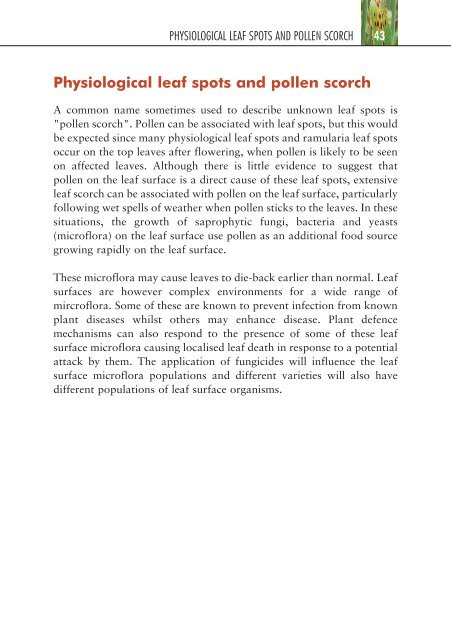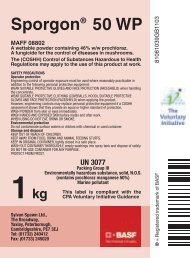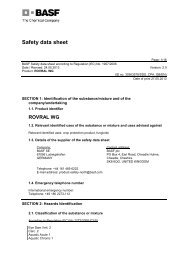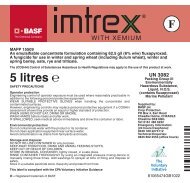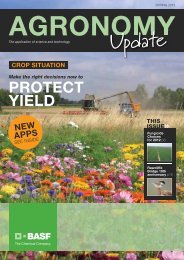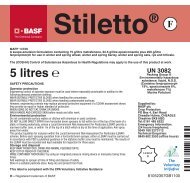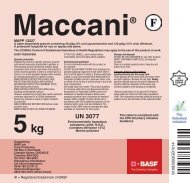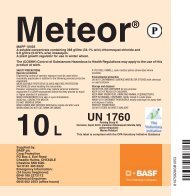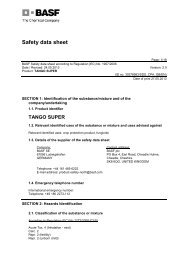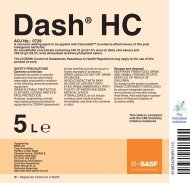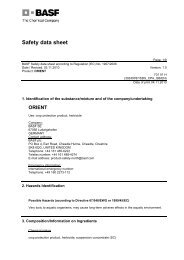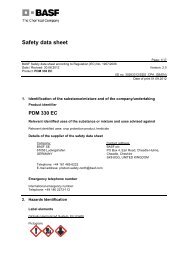a guide to the recognition and understanding of ramularia and other ...
a guide to the recognition and understanding of ramularia and other ...
a guide to the recognition and understanding of ramularia and other ...
Create successful ePaper yourself
Turn your PDF publications into a flip-book with our unique Google optimized e-Paper software.
PHYSIOLOGICAL LEAF SPOTS AND POLLEN SCORCH 43<br />
Physiological leaf spots <strong>and</strong> pollen scorch<br />
A common name sometimes used <strong>to</strong> describe unknown leaf spots is<br />
"pollen scorch". Pollen can be associated with leaf spots, but this would<br />
be expected since many physiological leaf spots <strong>and</strong> <strong>ramularia</strong> leaf spots<br />
occur on <strong>the</strong> <strong>to</strong>p leaves after flowering, when pollen is likely <strong>to</strong> be seen<br />
on affected leaves. Although <strong>the</strong>re is little evidence <strong>to</strong> suggest that<br />
pollen on <strong>the</strong> leaf surface is a direct cause <strong>of</strong> <strong>the</strong>se leaf spots, extensive<br />
leaf scorch can be associated with pollen on <strong>the</strong> leaf surface, particularly<br />
following wet spells <strong>of</strong> wea<strong>the</strong>r when pollen sticks <strong>to</strong> <strong>the</strong> leaves. In <strong>the</strong>se<br />
situations, <strong>the</strong> growth <strong>of</strong> saprophytic fungi, bacteria <strong>and</strong> yeasts<br />
(micr<strong>of</strong>lora) on <strong>the</strong> leaf surface use pollen as an additional food source<br />
growing rapidly on <strong>the</strong> leaf surface.<br />
These micr<strong>of</strong>lora may cause leaves <strong>to</strong> die-back earlier than normal. Leaf<br />
surfaces are however complex environments for a wide range <strong>of</strong><br />
mircr<strong>of</strong>lora. Some <strong>of</strong> <strong>the</strong>se are known <strong>to</strong> prevent infection from known<br />
plant diseases whilst o<strong>the</strong>rs may enhance disease. Plant defence<br />
mechanisms can also respond <strong>to</strong> <strong>the</strong> presence <strong>of</strong> some <strong>of</strong> <strong>the</strong>se leaf<br />
surface micr<strong>of</strong>lora causing localised leaf death in response <strong>to</strong> a potential<br />
attack by <strong>the</strong>m. The application <strong>of</strong> fungicides will influence <strong>the</strong> leaf<br />
surface micr<strong>of</strong>lora populations <strong>and</strong> different varieties will also have<br />
different populations <strong>of</strong> leaf surface organisms.


